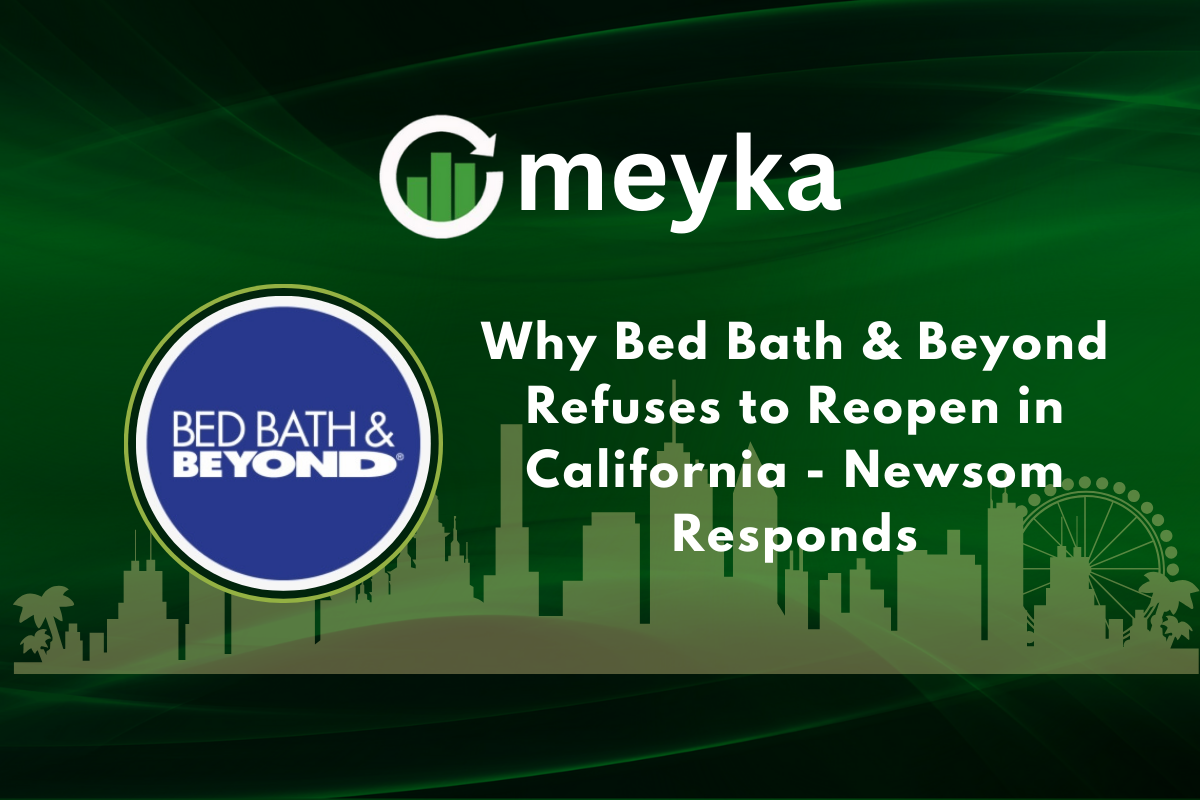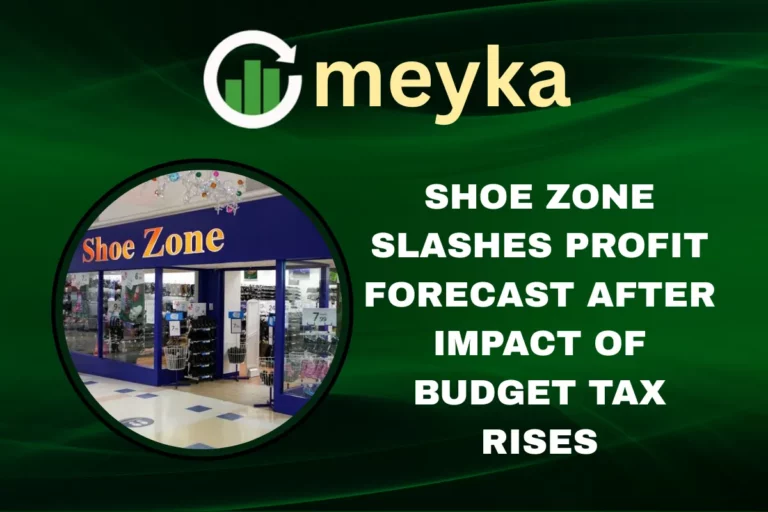Why Bed Bath & Beyond Refuses to Reopen in California – Newsom Responds
Bed Bath & Beyond was once a weekend stop for many of us. The store was popular in America for college supplies and wedding gifts. At its peak, the chain had more than 1,500 stores across the country. But over time, things changed. Online shopping grew stronger, customer habits shifted, and the company’s costs kept rising. By 2023, Bed Bath & Beyond filed for bankruptcy, closing most of its stores nationwide.
Now, the brand is trying to make a comeback under new ownership. Stores are slowly reopening in different states. Yet one state is left out of the revival: California. The company has decided not to reopen any physical stores there. This choice is sparking questions. Why avoid one of the biggest retail markets in the U.S.? What does it mean for California shoppers and workers?
Governor Gavin Newsom has stepped in to respond. He argues California is still a place for businesses to thrive. But the company’s decision tells a different story. Let’s explore the reasons behind the move, the reactions it has sparked, and what it means for the future of retail.
Background: Bed Bath & Beyond’s Fall
Bed Bath & Beyond grew fast. Then the model broke. Online rivals got stronger. Foot traffic dropped. Supply chain stress raised costs. Missteps in merchandising did not help. By April 2023, the company filed for Chapter 11. Liquidation followed that summer. Stores closed nationwide by July 30, 2023.
Overstock bought the brand’s intellectual property for $21.5 million. The buyer redirected its website to BedBathandBeyond.com and leaned into the home category. The plan started as an online revival with fewer fixed costs.

In 2024-2025, leadership changed again. Marcus Lemonis became executive chairman at the successor company, Beyond, Inc. He pushed smaller, profitable formats and an “asset-light” strategy. The company also said the earlier decision to drop the Overstock name had been a mistake, and then refocused the portfolio.

By August 2025, the brand returned to physical retail with a new identity: “Bed Bath & Beyond Home.” The first store opened in Nashville. It used a tight assortment and offered familiar deals, including coupons.
Why California Is Excluded?
The company says California is too hard and too costly. Executive Chairman Marcus Lemonis called the state “overregulated, expensive, and risky.” He pointed to high taxes, higher wages, and a dense web of rules. He said those factors crush store-level profit and limit growth. Marcus also argued that operating only online in the state avoids those costs.
Local reporting matched that message. Coverage noted the plan to open stores in almost every other state, while skipping California for now. Lemonis framed it as a practical move, not a political one, but firm on economics. The company will ship to Californians through e-commerce instead.
There is also a new retail blueprint. The brand is testing smaller footprints and faster turns. Kirkland’s (now The Brand House Collective) will convert many of its locations to Bed Bath & Beyond formats over the next two years. That approach lowers rent, payroll, and inventory risk, especially outside high-cost markets.
Impact on California Consumers
Shoppers lose the in-store experience. No browsing aisles for towels or kitchen tools. No quick exchanges at a service desk. Wedding registries and college-move-in runs shift online. That is fine for some. It is not as easy for last-minute needs. Competitors like Target, Walmart, HomeGoods, and Amazon fill the gap. But brand loyalists miss the old ritual.
Jobs tied to store operations do not return either. Leasing agents and local suppliers also feel the absence. The brand says California customers can still buy online. Delivery covers the state. Yet the choice removes a traffic driver for nearby shopping centers.
Governor Gavin Newsom’s Response
Governor Newsom’s office pushed back. The response mocked the company’s bankruptcy history and questioned its relevance. The message implied that California remains a top market for brands that can execute. It also wished the retailer “luck” in getting to a second new store.
Follow-up coverage carried the same tone. A spokesperson and social posts framed the decision as a corporate choice, not proof that California is anti-business. The public exchange turned sharp. Lemonis replied by thanking the governor for past purchases, keeping the spat in the headlines.

Policy changes were not promised in the back-and-forth. The state’s minimum wage for some sectors and its regulatory layers remain. The company’s stance is also unchanged: skip California stores and serve customers online.
Broader Implications for Retail
This episode shows a bigger shift. National brands are rethinking big boxes in high-cost states. Smaller stores and partner-run fleets cut risk. Conversions of existing sites speed openings and reduce build-out bills. That model suits a world where e-commerce handles heavy lifting and stores act as showrooms and pickup hubs.
It also shows the new math of turnarounds. After bankruptcy, cash is tight. Every lease must pay back fast. States with higher wages and complex rules face a higher bar. Brands will pilot in friendlier markets first, then expand only if unit economics work. Bed Bath & Beyond’s plan follows that playbook.
Consumer & Market Reactions
Online chatter split into camps. Some praised the honesty about costs. Others saw it as a stunt. Analysts noted that store count will likely stay limited while the company tests formats and conversions. The message: growth will be careful, not a rush back to giant boxes.
Media attention also focused on the political flavor of the comments. That kept the story trending, but the business plan stayed the same: a small network of profitable stores, heavy online sales, and no California openings for now.
Bottom Line
The brand is back, but it is different. The new version favors light assets, quick turns, and careful leases. California does not fit the early model, according to leadership. The governor’s team sees it as post-bankruptcy noise. The truth likely sits in the middle. Unit economics rule turnarounds. If smaller formats hit targets elsewhere, the state may get a second look later. Until then, California shoppers will click to buy, not drive to a Bed Bath & Beyond store.
Frequently Asked Questions (FAQs)
As of August 2025, Bed Bath & Beyond says it will not open or run any physical stores in California due to high costs and strict rules.
Yes. The brand lives on. It rebranded under new ownership and runs online. It also opened new small-format stores starting in Nashville in 2025.
There are currently zero physical Bed Bath & Beyond stores in California. The company has chosen to serve Californians only via its website.
A 2022 lawsuit claimed the company’s CFO and an investor ran a “pump-and-dump” scheme that inflated the stock price before selling shares for profit.
Disclaimer:
This is for informational purposes only and does not constitute financial advice. Always do your research.






